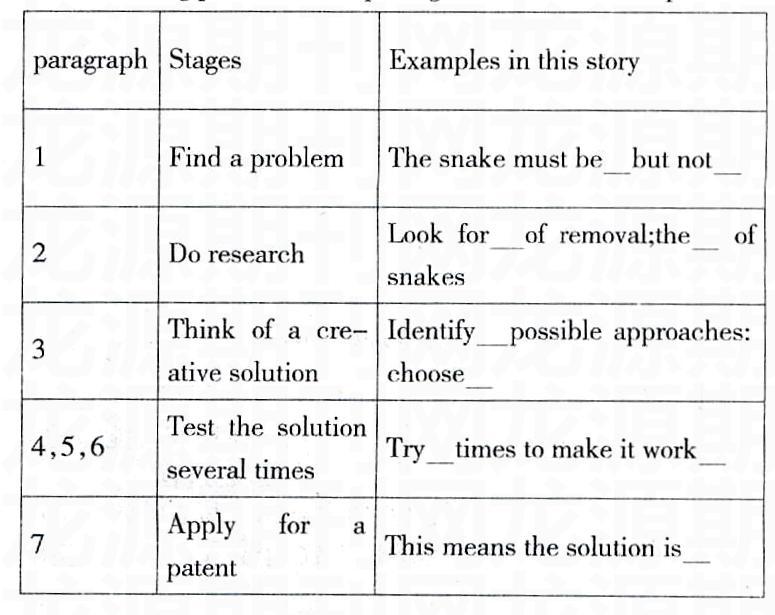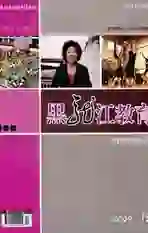高中英语任务型阅读教学特点与实例
2009-04-06
任务型教学强调以学生为主体,提倡“意义至上,使用至上”的教学原则,倡导体验、实践、参与、交流和合作的学习方式。学生在参与教师或教材精心设计的任务型学习活动中认识语言、运用语言、发现问题、找出规律、归纳知识和感受成功。对学生的“自主、合作、探究”能力的培养有着积极意义。
一、任务型课堂教学的特点
多年来对外语教学中交际学习任务的讨论和研究并没有对交际学习任务有一致的定义,但是庞继贤教授在为David Nunan 《交际课堂的任务设计》一书写的导读中表明:任务作为课堂教学的一种活动至少应具备以下特点:
1.以意义为中心,而不是以操练某种意义不大、甚至是无意义的语言形式为目的。
2.任务的焦点是解决某一交际问题,这一交际问题必须与现实世界有着某种联系。这种联系不应是笼统的或是现实世界中某种活动的翻版,而应是具体的,贴近学生生活、学习经历和社会实际,能引起学生的共鸣和兴趣,激发学生积极参与的欲望。
3.任务的设计和执行应注意任务的完成,即交际问题的解决。任务完成的结果是评估任务是否成功的标志。
二、实例
Step 1:Warming up
Task1 Show some pictures and talk about four Chinese ancient inventions.
Task2:Work in pairs and talk about the famous inventors and their inventions.
Task3: Show some recent inventions.
Task4:Try to give a definition to an inventions .Andrefer to the pictures on page19 and tell apart the difference between inventions and discovery.
An Invention is something that is created by a human being.
A discovery merely makes knownsomething that already existed in nature.
Step 2:Pre-reading
Task:Present the stages for an invention and work out the suitable order.
1.Applying for a patent;2.Finding a problem;3.Doing research;4.Testing the solution;5.Thinking of a creative solution;6.Deciding on the invention
Step 3:Skimming
Task1: Skim the whole passage and get the main idea:
The text narrates the problem of the snakes and presents the procedures of catching them and applying for a patent.
Task2:Get the students to comprehend the passage carefully and accurately,and then divide the text into several parts and work out the main idea for each paragraph.
Part I (Para.1) the discovery of the problem of the snakes.
Part II (Paras.2-3) the research on the approaches to solve the problem.
Part III (Para. 4-6) the attempts to catch the snakes.
Part IV (Para.7-8) the requirement of getting a patent.
Step4: Listening and scanning
Task: Find out which paragraph or paragraphs deal with each inventing process in the passage and find the examples:

Step5:Detailed reading
Task:choose the right answer according to the text.
1.Why didthe writer do so much to trap thesnakes but not hurt them?
A.Because she wanted to eat the snakes.
B.Because she planned to apply for apatent.
C.Because she obeyed her parents andwantedto test her new idea.
D.Because they were poisonous snakes.
2.The writer placed a frozen bowl over the snakes habitat because.
A.the snakes weresmall
B.she knew the snakes were cold-blooded animals
C.she didnt want to be bitten
D.she wanted to make the snakes passive and caught them easily
3.Which statement is true according tothe text?
A.The writer decided to send her invention to the patentoffice the moment she succeeded catching the snakes.
B.Your product must be different from everybody elses if you want to receive a patent.
C.If an application for your product proves to be valid,you can get a patent immediately.
D.The snakes were so sleepy in the second attempt that they couldnt bite the writer at all.

4.According to the text,which subject do you think can be given a patent?
A.A new way to make dirty water clean.
B.A new novel written by Mr. Wang.
C.A new kind of glass found in the mountain which can be used as a medicine.
D.A new star discovered by a scientist.
Step6: After- reading
Task:Group work look at the following problems. Choose one and use the scientific stages to design a new invention to solve it. Remember to include one change to your invention in case it doesnt work the first time.
Problem 1: the apples growing on your apple tree are too high for you to reach them. What can you invent to pick your apples in comfort?
Problem 2: You want to catch fish but not hurt them when you do so. Design a fishing rod that will solve this problem.
Problem3: You need to make a house but you only have fishing nets and many plastic bottles. How can you solve it?
以上是新教材模块7 unit3 inventors and inventions教学实例,教者为了优化教学手段,必须充分利用和创设情景,无论是语言情景、实物情景,还是声像情景,都可以激发学生的学习兴趣。如听录音、看投影、角色对话等,让学生入情入景,努力使书本语言和实际运用统一起来,使课堂教学在全方位多层次的活动中轻松愉快地进行。在本次教学过程中,教师运用了一个渐变的过程,使学生从在教师的辅助下完成练习向完全独立完成阅读作业过渡。教师首先把材料根据不同的任务要求分成“主旨题”、“推断题”、“事实题”,通过提问—回答,或小组讨论等形式在互动中使学生自己找到正确的选项。最后,讨论部分学生在完全独立的过程中完成,呈现自己的发明。整个教学过程完整,充分利用了任务型教学的优势。当然,在任务型阅读教学过程中,要适时地发挥教师的示范引导作用。教师不能只是简单地布置任务就行了,而要进行卓有成效的组织工作,并进行必要的示范,使学生真切地看到、听到、感受到自己参与的任务、所追求的目标、使用方法和整个操作过程,使之尽快地进入角色。
三、以任务为基础的教学分析的延伸
以任务为基础的教学,教师对于第二语言的教与学并不陌生,但通常这些任务都是聚焦于意义而不是形式。Nunan (1989)给交际下的定义是“课堂中的一项工作,主要是让学习者用目的语言理解、控制、产出和交流,但他们的注意力主要是集中于意义而不是形式”。 目前,阅读教学也提出以任务为基础的教学模式,其目的在于提高学习者对形式的意识程度。同时,这些任务又是交际性的,应为学习者提供以意义为主的交流。
Ellis(2003)提出有三种类型的任务:以结构为基础的产出型任务、理解任务、增强意识的任务。产出型任务需要使用目的语的形式来完成纯粹的交际活动,任务的材料从性质上来讲不仅仅局限于语法形式,但学习者必须借助目的语结构来完成任务。理解型任务是为了让学习者注意和理解经过精心设计的输入材料,通常情况下这些输入材料含有一定的刺激信号,要求学习者作出适当的反应。如果说前面的两项任务是以隐性的形式在交际情景中介绍目的语的语言形式,那么增强学习者阅读意识的任务则以完全显性的方式要求学习者用目的语结构完成任务。语言内容就是任务的内容。这样的任务首先向学习者提供目的语语言的例子,然后要求学习者把握这些内容,并从中推断出一定的规则。
E-mail:lili79928@163.com
?笠编辑/李莉
